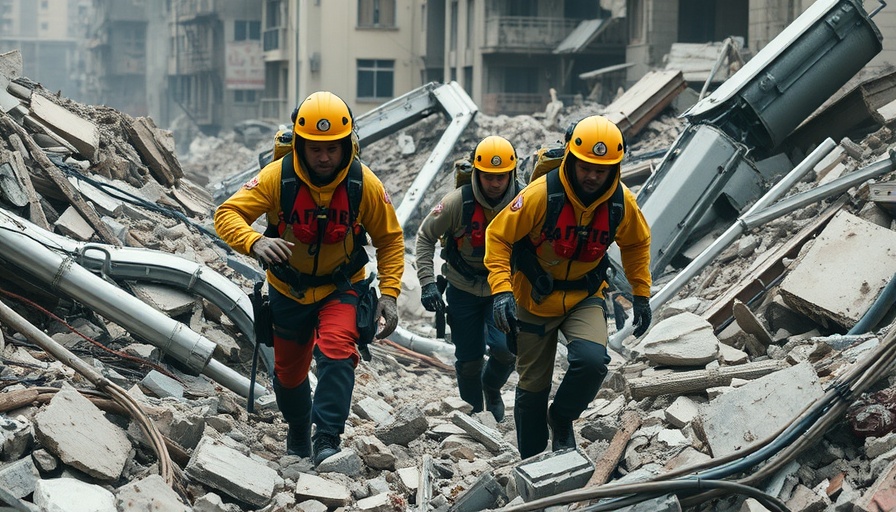
Myanmar's Earthquake Devastation: A Growing Humanitarian Crisis
On March 29, 2025, Myanmar was rocked by a powerful 7.7 magnitude earthquake that has left an indelible scar on the region. As search and rescue efforts continue, the death toll has tragically surpassed 1,600, with hopes dwindling as the number of missing continues to rise. The International Federation of the Red Cross has highlighted the dire situation, indicating that more than 18 million people live in the area affected by this calamity. This catastrophic event is compounded by the ongoing civil unrest in Myanmar, complicating relief efforts.
The Immediate Aftermath: Search and Rescue Operations
Rescue workers are scrambling against time to find survivors amidst the rubble of collapsed buildings. In Mandalay, the earthquake’s epicenter, emergency crews are intensively involved in searching through debris, but the scope of destruction is daunting. Crews report that electricity and communications infrastructure have been severely damaged, hampering rescue operations further. Reports have emerged of over 1,590 homes destroyed in the region, highlighting the immediate need for shelter and basic supplies among survivors.
Relief Efforts Amidst Chaos: A Temporary Ceasefire
In a surprising move, Myanmar's National Unity Government declared a temporary ceasefire, aiming to facilitate relief efforts. This announcement allows humanitarian organizations, including the United Nations, to access affected areas more securely. The ceasefire aims to create a calm environment for search and rescue efforts, as conflicts between government forces and civilian resistance have complicated relief logistics, posing significant challenges to basic aid delivery.
Future Challenges: Long-Term Implications of the Earthquake
The earthquake has awakened concerns not just for immediate survival, but for long-term recovery in a nation already grappling with a humanitarian crisis due to civil strife. With crucial infrastructure damage, rebuilding efforts could stall significantly. The protracted civil war has similarly led to an already strained system incapable of meeting the needs of its populace. Initiatives for rebuilding, coupled with the psychological impact on survivors, will need urgent attention in the months to come.
The Broader Humanitarian Context: Understanding Myanmar's Struggles
Myanmar remains trapped in a cycle of conflict and natural disaster, challenging international support systems and humanitarian aid efforts. As the military government continues to promote a narrative that distances itself from the humanitarian implications of the earthquake, civilian groups are left to navigate the aftermath. This earthquake has only intensified the already existing crisis, which incorporates issues related to access to healthcare, shelter, and food distribution—all exacerbated by the ongoing civil war.
The Importance of Global Response: How the World Can Help
Now more than ever, a coordinated international response is needed to address the challenges following this earthquake. Humanitarian organizations advocate for increased assistance and support to ensure the provision of basic needs and medical care. Mobilizing financial aid and resources is critical; however, this help must be navigated through the complexities of Myanmar's political landscape.
While the search and rescue operations continue, the plight of many who have lost loved ones and their homes remains a harrowing endeavor. The global community must act swiftly and effectively to support these efforts and ensure that the humanity in Myanmar is not forgotten amidst the political turmoil.
Final Call to Action: Stay Informed and Support Relief Efforts
The ongoing disaster in Myanmar underscores the importance of staying informed about such humanitarian crises. Engaging with reliable news sources can help keep awareness high and can guide efforts to support nonprofits and humanitarian organizations actively working on the ground. As the world watches and rallies to assist, every effort counts in rebuilding lives.
 Add Element
Add Element  Add Row
Add Row 



Write A Comment